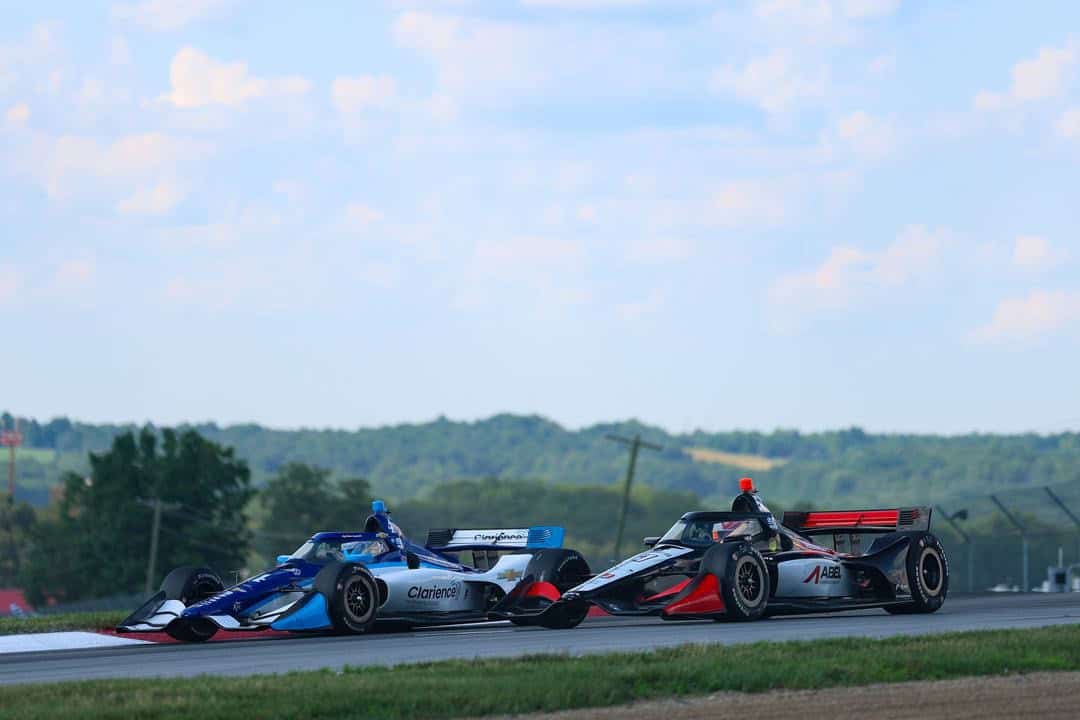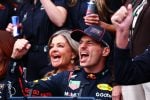Dale Coyne Racing announcing one of their drivers so early in the offseason is such an odd change of pace from what the IndyCar world has seen in the past several years. In fact, before the 2025 season, Rinus VeeKay was the final full-time driver to be confirmed ahead of the season-opening race at St. Petersburg.
The team’s early confirmation of 2025 Indy NXT Champion Dennis Hauger and a subsequent technical alliance with Andretti Global has continued the rhythm of silly season news that began with Team Penske announcing Will Power’s departure.
But after all of the drivers have moved around, what seats are left and what are the positives and negatives to each seat at this point? Let’s take a look at the three main seats that are open and assess them.
We won’t focus on who’s been rumored for each seat, but why a driver would want to or wouldn’t want to sign for a particular team.
Car No. 4: A. J. Foyt Racing
With David Malukas‘ departure to take Will Power’s seat at Team Penske, A. J. Foyt Racing has an open spot in their No. 4 Chevrolet. A driver looking to sign here has one main benefit with the technical alliance with Team Penske.
A driver signing here will have a car engineered by a Team Penske engineer. For Malukas, that engineer was James Schnabel. Schnabel’s past experience includes Santino Ferrucci in 2023-24 and before that he was Josef Newgarden‘s performance engineer from 2019-2022.
Is Schnabel going to remain with the Foyt organization? Only time will tell, but based on Schnabel’s previous work, it wouldn’t be a bad fit for an incoming driver.
A driver might be enticed by the team’s engineering staff, but it is understandable for a driver to have reservations on joining the team. After all, we have to look at the team’s winning record over the past several decades.
Kenny Brack won the 1999 Indianapolis 500 for the team. Since that May afternoon, Airton Dare won at Kansas in 2002 and Takuma Sato picked up an impressive victory for the team at Long Beach in 2013.
We’re now as far away from Sato’s victory as Sato’s victory was from Dare’s. Let’s face it, that would give a lot of drivers reason to shy away from the team, but being in a competitive car might give a driver all the confidence they need.
Unknown Car: Dale Coyne Racing
Dale Coyne Racing had two seats available following the end of the 2025 season. VeeKay left the team and it is currently unknown if Jacob Abel will return for 2026. There are multiple drivers in contention for the second seat alongside Hauger.
DCR had two of the most talented engineers in the paddock working on their cars with Mike Colliver and Michael Cannon helping Abel and VeeKay, respectively. The team will also have as previously mentioned a technical alliance with Andretti Global which will help elevate the team’s performance even more so.
There’s no denying the largest reason why a driver would have concern about joining the Illinois-based team. Over the last two years, their drivers have been the victim of bumping at the Indianapolis 500 with Nolan Siegel (2024) and Abel (2025) forced to watch the race from the sidelines.
While the technical alliance with Andretti Global will result in better-prepared cars for Indianapolis in 2026, we can’t forget that Marco Andretti was in this year’s last-row shootout and Marcus Ericsson was in last year’s last-row shootout. Granted, Ericsson had a practice crash that caused issues, so there were mitigating circumstances.
DCR has fewer resources in their building than most teams. But they know how to use them well. VeeKay showed everybody that last year with the drives he made throughout the season and a hungry enough driver can push them into victory lane with enough racing luck.
Car No. 76: Juncos Hollinger Racing
Conor Daly joined Juncos Hollinger Racing after the halfway point in 2024 and helped bring what was then the No. 78 Chevrolet into the Leaders Circle program mostly thanks to a podium at Milwaukee.
Daly’s 2025 season was full of ups and downs and the dumb racing luck that has followed him throughout his career. For example, how many other drivers would have a contending car for the win at the Indianapolis 500 all of a sudden go away because the wheel weights fell off of the right rear tire, throwing it out of balance?
Who else would have qualified at Portland with the front tires on the wrong sides of the car? How about at the second Iowa race where Daly had a top-five car and was within a minute of getting a lap back after an early final pit stop but for a full course yellow that trapped him down the running order.
Daly’s top-five finish at the season finale in Nashville was the icing on the cake of a season of progress for one of the youngest teams in IndyCar and should have been enough to get him a new contract, but as everyone knows, funding is a big component of racing.
A driver would want to join JHR because they also have good people. The team has shown that they can prepare a car well on ovals as we saw with their results. However, their road and street course package needs some refinement and with the percentage of road and street course races on the schedule, that would make any driver have reservations about signing with Ricardo Juncos and Brad Hollinger’s team.
The two co-owners are craving stability and have an opportunity to have that in 2026 after recovering from a chaotic 2024 and a sponsor shuffle-led 2025. A driver with a lot of budget might be in the catbird seat, but never count out the team to figure out a way to make the numbers work if they bring in a driver with little funding but with talent to spare.
Christopher DeHarde has covered IndyCar racing and the Road to Indy for various outlets since 2014. In addition to open wheel racing, DeHarde has also covered IMSA and various short track racing events around Indiana. Originally from New Orleans, DeHarde moved to the Indianapolis area in 2017 to further pursue a career as a motorsports writer.




